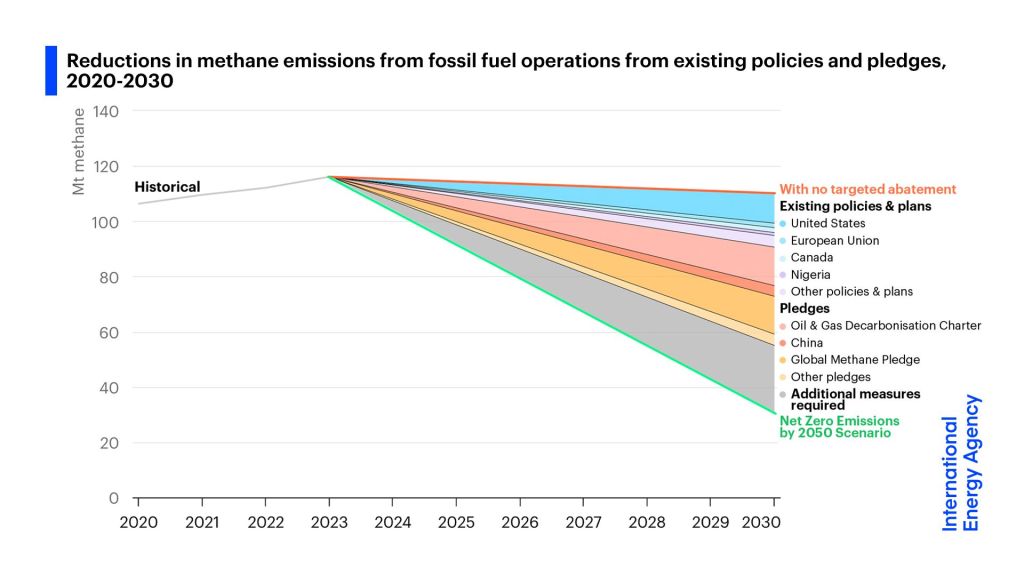
Methane emissions rose in 2023 despite reduction initiatives

By Anders Lorenzen
The emissions from methane, a powerful greenhouse gas (GHG) with 80 times the warming potential of carbon dioxide (CO2) rose in 2023 despite several pledges and initiatives to reduce emissions.
Analysis from the International Energy Agency (IEA) has declared methane emissions in the energy sector remained near a record-high in 2023 – this is despite commitments from the sector such as plugging leaking infrastructure.
Methane is emitted in oil and gas production, agriculture and landfills. They are relatively short-lived compared to CO2 but are a much more potent GHG than CO2, but are responsible for about a third of the rise in global temperatures since the Industrial Revolution. This means that if the industry could drastically reduce the emissions much gain in terms of tackling climate change could be achieved.
In 2023 the combined activities of fossil fuel production and usage emitted more than 120 million metric tons (mmt) of methane into the atmosphere, which is a slight rise compared with 2022 the report from IEA explained.
A part of the rise is related to the fact that large methane plumes from leaky fossil fuel infrastructure also jumped by 50% in 2023 compared with 2022. One super-emitting event, detected by satellites, was a well blowout in Kazakhstan that lasted more than 200 days. Apart from the record high 2022 and 2023 years methane emissions had plateaued at 130 mmt since 2019, the year when IEA launched its Global Methane Tracker.
A turning point in 2024
The IEA is adamant that global methane emissions remain far too high to meet international climate targets. However, the Paris-based agency is encouraged by the various pledges and initiatives around the world to reduce emissions. The IEA’s Executive Director Fatih Birol said: “A 75% cut in methane emissions from fossil fuels by 2030 is imperative to stop the planet from warming to a dangerous level. I am encouraged by the momentum we’ve seen in recent months, which our analysis shows could make an enormous and immediate difference in the world’s fight against climate change.”
As we recently reported a collaboration between Google and the Environmental Defense Fund (EDF) last month launched a new methane satellite that will help to pinpoint methane emissions in oil and gas operations. This is just one of many initiatives, pledges and policies that make the IEA optimistic that the tie will soon turn.
The world’s largest emitter of methane, the US is leading with policies to get to grips with this urgent issue. In 2021 150 countries pledged to reduce methane emissions by at least 30% from 2020 levels by the end of this decade, and it is evident much work is still to be done.
Methane has around 80 times the warming potential of CO2, but is short-lived, staying active in the atmosphere for 12 years whereas CO2 is active for between 300-1,000 years.